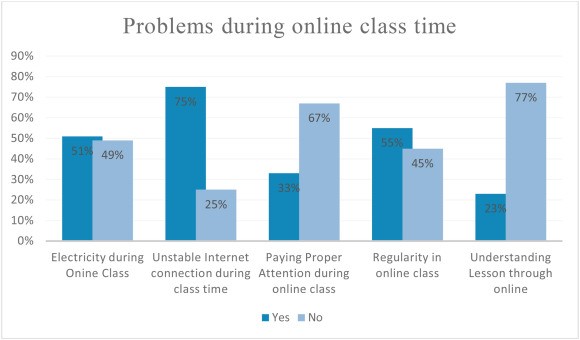
15 Upgraded Virtual Classroom Management Strategies For Teachers
13th June 2022
Even though the concept of online/virtual education is not a new thing but the COVID-19 pandemic made most educational institutions switch to digital learning. Nevertheless, schools and educational institutions are opening with time again but online/virtual learning is going to stay.
Classroom management is also one of the hardest parts of teaching. Moreover, it is also being considered one of the skilled teachers’ top professional development requirements. It’s quite tough getting a whole class to collaborate in person. As a 21st-century teaching professional, you must safeguard that your digital classroom is accomplished efficiently to make sure students will learn successfully to be prepared.
Major Challenges Of Online/Virtual Classroom Management
Below are a few major challenges faced by teachers, schools as well as educators-
- Investing in proper technology
- Technology can feel intimidating sometimes & studies show that teachers do not receive training and support
- Lack of parent collaboration as they also need to be supported
- Creating a learning environment at home can be very distracting, sometimes
- Ensuring internet safety for students and teachers is a critical issue
- Dealing with distractions is yet another problem

- As kids need social communication with their peers and virtual /online learning means that several may feel out-of-place at home.
- Though the internet is now more accessible than ever, students and teachers still have difficulties like technical issues in a virtual/online classroom.
- It has been seen that finding the motivation to get started on coursework has become difficult at certain times.
- Not receiving feedback timely and lack of instant communication.
Getting a time management structure is the most problematic challenge perhaps for students to overcome. Here are some ideas to manage your virtual/online classroom.
Virtual/Online Classroom Management Approaches For Teachers
Following are some of the very effective and helpful classroom management strategies that you can implement ---
- Train Yourself Well
Become well-versed with E-learning software solutions. These usually differ from each other in various aspects, including topographies and usability. Normally, these are planned with different features to streamline virtual/online classroom management. When you spend more and more time becoming familiar with the LMS or virtual/online classroom software, customization will become easier and you will be able to control the learning environment.
- Set and Describe the Rubrics
While teaching online or virtually, try to stress the importance of being polite and punctual early on. Describe clearly which language and expressions are suitable and which aren’t. If an apprentice continues to disobey, don’t hesitate to remind him or her of the rubrics or the protocol that you have set earlier. Additionally, you need to safeguard that each student understands and follows the rules set by you.
- Consider the Webcam Like a Person
Isn’t it very easy to turn off the webcam, mute yourself, and disengage? But this can affect students immensely and they will start ignoring or even be afraid of school. Remind your learners regularly that everyone else is in the same position. Teach them what proper eye contact looks like through a webcam, and practice it well. Boost them to smile, respect each other, and talk respectfully.
- Create A Routine
Building a routine for the online classroom makes it more fruitful for educators and students as well. By doing this, teachers will think deeper, find and plan new ways to engage schoolchildren digitally with the content, and how to screen students’ understanding. Creating a routine is important in a virtual/online learning setting, particularly when you can’t be present with your students day-to-day.
- Put Distractions Away
The biggest interruptions to an online/virtual classroom are added background noise and objects in their surroundings. This may also consist of staying away from siblings and pets. Therefore, it is significant to make the virtual/online classroom look, sound, and feel as much like an in-person classroom as possible. If required, have talks with family members as well to make sure they know your requirements.
- Add Visual Cues A Lot
Try to take the time to understand students’ interests, where their fortes lie, and what challenges they’re encountering. Make the most out of this info to craft a plan precise to the needs of your students by providing opportunities for interactive learning. As you’re sharing your screen, making slides, or even picking your webcam background, decide on visual indications that can specify certain actions.
- Flip the Classroom
Now is the time to dive in. Save the dry lectures and habit instruction when the students are off-camera and working on their own time. Moreover, those parts of the class can even be logged and sent to learners to watch later, when it doesn’t matter what pets or siblings are walking in the room!
- Set Academic Opportunities
You should set various academic expectations for students as well. It is your responsibility to know the students that are doing the cognitive work of the lesson. You can use numerous digital approaches like ‘raise your hands’, asking your learners to use fingers to share their answers, typing in the chat-box, or having small group conversations etc.
Make a mark as a teacher during the pandemic
Try Zoom’s feature - breakout rooms where you can assign two or more students to a distinct virtual room to have a smaller discussion and then send a minute countdown with a button to click to return to the main Zoom room. Google Classroom also allows teachers to modify assignments, deliver real-time feedback on Google documents, and develop materials with additional videos and teaching aids, and so on.
- Include Lessons That Privilege Text
Usually, in synchronous discussions, one or more students do have restricted internet access and cannot dependably participate. The detailed written comments can carry authority and foster close relationships among learners and between teacher and student. Try to practice writing in every subject (including math!) to hone students’ ability to write using clear, simple, and effective language.
- Gamification
Engage learners through gamification. Children may tend to look for other things and their attention span is also limited. There’s no better way to stop this than through games and communicating doings. Include gamification. Whether it’s an online Snakes and Ladders game or a fun competition between groups, you can always direct them away from boredom and even make quiet learners participate more by including a few games.
- Use Total Physical Response (TPR)
Needless to say, you can always re-energize learners by using TPR. You can introduce miming games, for example, or warm up the class using a song with a lot of movement verbs. Sitting still in front of the screen for half an hour may not work for some learners, who could become uninterested and agitated during your class. Try using TPR.
- Boost Students to Ask Questions
Certainly, many students feel fearful or shy while asking questions. These students can ask questions and clear uncertainties confidently in a virtual classroom. While clearing up instructions, you have to let students ask various questions with clear doubts without any boundaries.
- Include Reward and Recognition System
In an online learning setting, it is very hard to keep students engaged and motivated without keeping in place a reward and recognition system. Try to leverage LMS and virtual classroom solutions options to acclaim and reward students whenever they make growth or achieve something.
- Have a Dress Code
Well, it does not need to be extravagant! Asking students to get dressed for an online/virtual classroom the same way they would get dressed to go to school is the key to helping a virtual/online classroom. Ask schoolchildren to get up a little bit earlier, get dressed for school, and formulate for the day ahead.

- Extended Training
It is also important to continue to improve your skills by learning about the up-to-date classroom management tactics with best practices for virtual/online learning. Course on Virtual Online Teaching is something that will help you a lot. Register for various conferences or workshops or connect with peers in an informal setting to share experiences.
Remember, open and straightforward communication with the parents as well as goes a long way in helping them accomplish. Despite the encounters brought about by the pandemic, it shouldn’t put a stop to education. Course on Virtual Online Teaching helps teachers to run a smooth online/virtual classroom.
Willing to earn a certificate in Virtual Online Teaching? Contact us - 1800-212-6400.
Written By : Ruchi Mehta




